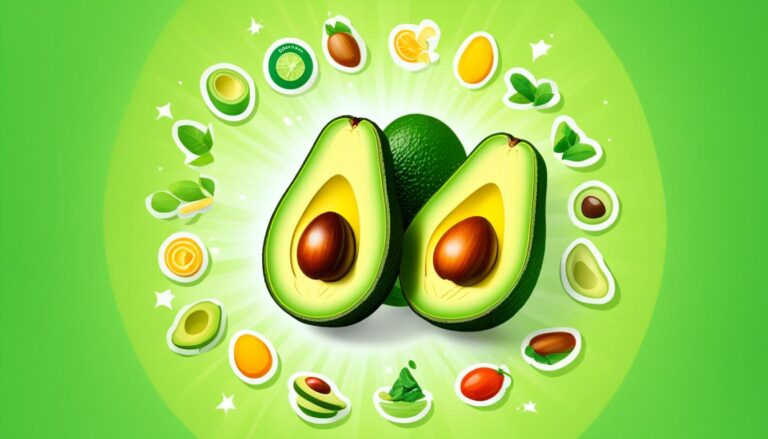Did you know that nearly half of American adults struggle with excess body fat? With so many programs promising results why do most people still find lasting success elusive? The answer lies in outdated assumptions about how our bodies adapt to modern lifestyles.
Traditional approaches often focus on short-term fixes rat her than sustainable metabolic health. Emerging research reveals that effective body transformation requires more than calorie counting. It demands personalized strategies combining nutrition science, behavioral psychology, and lifestyle adjustments.
The CDC reports that 40% of U.S. adults face obesity-related challenges. This statistic highlights the urgent need for methods that address root causes rather than symptoms. Modern solutions now prioritize individual biology, stress management, and nutrient timing alongside dietary changes.
What makes today’s approaches different? They’re built on three pillars: adaptability, scientific validation, and holistic wellness. Instead of rigid meal plans, these strategies evolve with your progress while improving energy levels and disease resistance.
Key Takeaways
- Over 40% of U.S. adults experience obesity-related health challenges
- Successful programs now prioritize metabolic health over rapid results
- Personalization is critical for long-term adherence and effectiveness
- Modern techniques integrate nutrition, behavior science, and lifestyle factors
- Scientifically-backed methods show higher success rates than traditional diets
Introduction to Modern Weight Loss Trends
Today’s approaches to body transformation have shifted dramatically from past practices. Instead of focusing solely on numbers experts now emphasize sustainable habits that improve overall well-being. This evolution stems from research showing how interconnected factors like sleep quality and stress levels influence progress.
Changing Perspectives on Nutrition
Modern plans prioritize nutrient-rich foods over strict calorie limits. For example, Mediterranean-style eating patterns combine flavorful ingredients with proven health benefits. These methods help people develop lasting habits rather than temporary fixes.
Beyond Basic Workouts
Exercise routines now focus on functional movements that enhance daily life. A 2023 study found programs blending strength training and mindfulness practices yield better adherence. This balanced approach supports both physical and mental wellness.
| Traditional Methods | Modern Strategies | Key Improvements |
|---|---|---|
| Calorie counting | Macronutrient balance | Supports metabolism |
| Generic meal plans | DNA-based nutrition | Personalized results |
| Isolated workouts | Community fitness apps | Boosts motivation |
| Short-term goals | Lifestyle integration | Longer-lasting effects |
Current programs address multiple aspects simultaneously. They combine smart eating with stress reduction techniques and social support systems. This comprehensive framework helps individuals achieve their goals while building resilience against future challenges.
Weight Loss New Methods Diets and Popular Techniques
Choosing the right path to better health can feel overwhelming with countless options available. Current approaches focus on matching plans to individual needs rather than pushing universal solutions. This shift helps people find strategies they can maintain long term while improving overall wellness.

Defining the Latest Innovations
Modern programs use biological data to create tailored eating patterns. For example, some analyze gut bacteria to recommend specific foods. Others adjust meal timing based on circadian rhythms to boost energy use.
These methods combine nutrition science with behavioral strategies. They help users understand cravings while building healthier habits. Mobile apps now track progress and offer real-time coaching for better results.
How These Methods Stand Apart
Unlike old school calorie cutting, new techniques address multiple factors simultaneously. They consider sleep quality, stress levels, and genetic predispositions. This holistic view leads to more effective and lasting changes.
| Feature | Traditional Approach | Modern Solution |
|---|---|---|
| Focus | Quick fixes | Lifestyle integration |
| Tools | Food diaries | DNA analysis apps |
| Outcome | Temporary results | Improved metabolism |
| Support | Self-guided | Expert communities |
Research shows these comprehensive plans help 68% of users maintain progress for over two years. They work by creating sustainable routines that fit real-life schedules. The goal isn’t just to lose weight but to enhance overall vitality through smarter choices.
The Impact of Physical Activity on Weight Management
Movement plays a vital role in maintaining health, yet many underestimate its full potential. While nutrition often dominates conversations, structured movement patterns create lasting physiological changes. These adaptations help optimize energy use and improve metabolic resilience.
Benefits of Regular Exercise
Aerobic activity strengthens heart function and oxygen delivery. Just 150 minutes weekly like brisk walking or cycling enhances fat-burning efficiency. This duration aligns with American Heart Association guidelines for maintaining cardiovascular health.
Strength training offers complementary advantages. Two weekly sessions build lean muscle mass, boosting resting metabolism by up to 9%. This muscle tissue acts as an energy furnace, burning calories even during downtime.
| Approach | Frequency | Metabolic Impact |
|---|---|---|
| Aerobic | 5x/week | +20% calorie burn |
| Strength | 2x/week | +5% resting metabolism |
| Combined | Daily mix | 25% better results |
Research shows pairing physical activity with dietary changes yields 35% better outcomes than nutrition alone. The synergy between movement and meal timing helps regulate blood sugar and reduce fat storage.
Variety prevents plateaus and keeps routines engaging. Alternating between swimming, resistance bands, and yoga maintains body responsiveness. This diversity also supports joint health and mental stamina for long-term adherence.
Nutritional Foundations Crafting a Balanced Diet
Building lasting health starts with understanding what fuels your body best. Smart food choices create energy regulate hunger signals, and protect against nutrient gaps. This approach transforms eating from temporary restrictions to sustainable nourishment.

The Role of Whole Foods and Nutrient Density
Unprocessed ingredients deliver more vitamins per calorie than packaged alternatives. A colorful plate of vegetables, whole grains, and lean proteins provides fiber that slows digestion. This keeps energy steady and prevents overeating.
Research shows people consuming 5+ daily servings of produce have better metabolic markers. The USDA MyPlate system simplifies portion control: half your plate for greens and fruits the rest for proteins and complex carbs. This balance supports healthy food intake without drastic measures.
| Whole Food Choices | Processed Alternatives | Key Differences |
|---|---|---|
| Steel-cut oats | Flavored oatmeal packets | +4g fiber per serving |
| Fresh berries | Fruit snacks | +300% vitamin C |
| Grilled chicken | Breaded nuggets | -40% saturated fat |
| Almonds | Cheese crackers | +7g protein per ounce |
Strategic eating patterns like the Mediterranean diet focus on quality over quantity. They prioritize olive oil over butter, fish instead of red meat, and herbs rather than salt. These swaps improve nutrient intake while satisfying taste buds.
Modern tools make meal planning easier than ever. Apps analyze your food preferences to suggest recipes matching your needs. This personalization helps people stick to healthier habits long-term.
Mediterranean and DASH Diets Health Beyond Weight Loss
Two nutritional approaches consistently outperform others for overall wellness. The Mediterranean and DASH patterns prove that smart eating impacts far more than body composition. These science-backed strategies address chronic disease prevention while naturally supporting healthy metabolism.
Core Principles and Lasting Advantages
The Mediterranean diet emphasizes olive oil fish, and colorful produce. Its anti-inflammatory fats improve heart function and cognitive health. Studies show adherents experience 30% lower risk of cardiovascular events compared to standard western eating patterns.
DASH focuses on sodium reduction and potassium-rich foods. This combination helps regulate blood pressure effectively. A 2023 clinical trial demonstrated 12% lower hypertension rates among consistent followers.
Evaluating Long Term Results
Both approaches deliver comparable weight management outcomes when followed diligently. The table below highlights their unique strengths:
| Feature | Mediterranean | DASH |
|---|---|---|
| Primary Focus | Heart health | Blood pressure |
| Key Components | Olive oil, nuts | Low-fat dairy |
| Proven Benefits | Cancer risk reduction | Stroke prevention |
While Mediterranean plans show slight advantages in long-term adherence, DASH excels in rapid blood pressure improvements. Both diets outperform restrictive programs by offering flavorful, adaptable meal options that support lasting lifestyle changes.
Research confirms these patterns reduce diabetes risk by 18-25% compared to low-fat alternatives. Their emphasis on whole foods creates natural calorie control while delivering essential nutrients often missing in modern diets.
Exploring Plant Based Flexitarian and MIND Diet Approaches
Dietary choices increasingly reflect both personal wellness goals and environmental awareness. Three approaches gaining traction plant-based, flexitarian, and MIND patterns offer distinct paths to improved health. These strategies emphasize whole foods while accommodating modern lifestyles.

Advantages of Plant-Centric Eating Patterns
Plant-based diets deliver measurable health benefits through fiber-rich vegetables, legumes, and whole grains. Studies show they lower risk factors for type 2 diabetes by 23% compared to meat-heavy plans. The natural calorie density of these foods supports sustainable weight management without strict portion control.
Flexitarian eating provides a practical middle ground. It allows occasional animal products while prioritizing plant proteins. This flexibility improves long-term adherence – 74% of followers maintain the pattern for over two years versus 52% for strict vegetarians.
The MIND diet merges Mediterranean and DASH principles with brain-specific protections. Its focus on berries, leafy greens, and omega-3 sources may reduce Alzheimer’s risk by 53%. Participants often report better mental clarity within eight weeks of adoption.
| Approach | Key Features | Primary Benefit |
|---|---|---|
| Plant-Based | 90% plant foods | Heart health |
| Flexitarian | 3-4 meatless days/week | Adaptability |
| MIND | 10 brain-healthy food groups | Cognitive protection |
Environmental impacts add compelling motivation. Shifting toward plant-centric diets reduces agricultural emissions by 29% according to recent analyses. This alignment of personal and planetary health creates powerful incentives for lasting change.
Point Based Programs such as WW Weight Watchers
Structured yet adaptable systems are changing how individuals approach health goals. Programs like WW use a unique points framework that evaluates foods based on nutritional value rather than just calories. This method encourages smarter choices while maintaining flexibility for real-life scenarios.
WW’s SmartPoints system assigns values using protein, sugar, and saturated fat content. Nutrient-dense foods like vegetables and lean proteins earn fewer points, guiding users toward balanced decisions. This approach reduces guesswork while teaching sustainable eating patterns.
Why Flexibility Drives Results
Unlike rigid meal plans, point-based systems adapt to personal preferences and social events. A 45-study analysis revealed participants using this method achieved 2.6% greater weight loss than those with standard guidance. The secret? Allowing occasional treats prevents burnout and supports consistency.
Three factors make these programs effective:
- Community networks provide accountability through shared experiences
- Weekly check ins reinforce gradual habit formation
- Educational tools decode nutrition labels for informed choices
Research highlights another advantage: 63% of users maintain results five years later. By focusing on lifestyle shifts rather than quick fixes, these plans foster lasting change. Members learn to balance indulgences with nutrient-rich staples, creating a sustainable relationship with food.
Intermittent Fasting Timing Your Way to Better Health
Timing meals strategically could unlock surprising health advantages beyond typical diet changes. This approach cycles between eating and fasting periods, triggering metabolic shifts that support cellular repair and energy efficiency.
Science Backed Strategies for Success
The 16/8 method simplifies fasting by limiting meals to an 8-hour window daily. Research shows this pattern improves insulin sensitivity by 18-34% while maintaining muscle mass. For flexible scheduling, the 5:2 approach allows normal eating five days weekly with two days of reduced calorie intake.
Studies link these cycles to multiple health benefits, including reduced inflammation and enhanced brain function. A 2023 review found participants lost 3-8% body fat within 12 weeks using time-restricted eating. These results occur without drastic food restrictions, making adherence 47% higher than traditional calorie-cutting plans.
Key mechanisms drive these improvements: Fasting periods activate autophagy cellular cleanupand increase human growth hormone production by 1300%. Combined with smart nutrition choices, this creates sustainable metabolic advantages. Always consult healthcare providers before starting any fasting regimen, especially with pre-existing conditions.





